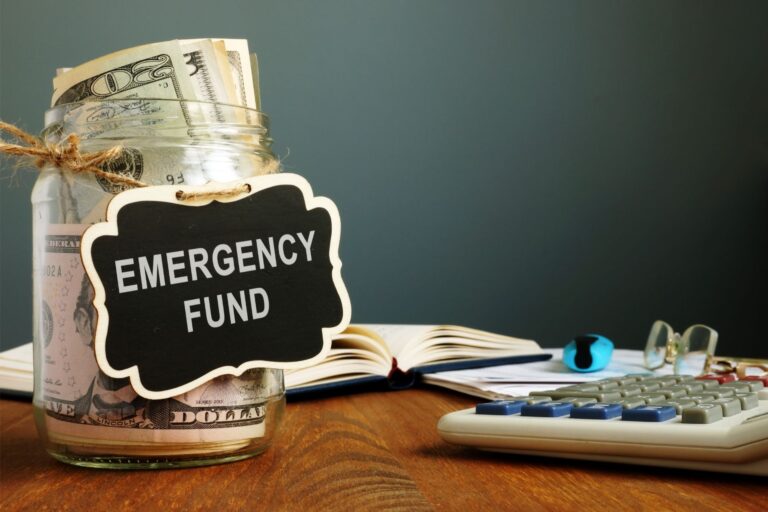9 Money Rules To Live By

Look, I get it. You’re probably tired of hearing about financial advice that sounds like it came from your great-grandma’s cookbook. But here’s the thing, money rules aren’t just dusty old principles that someone made up to ruin your fun. They’re actually lifelines that can save you from drowning in debt, keep you from panicking when your car breaks down, and help you retire somewhere nicer than your parents’ basement.
After years of studying finance and observing people make the same financial mistakes repeatedly (myself included, trust me), I’ve come to realise that financial success isn’t solely about how much you earn. It’s about how well you play by the rules. And no, I’m not talking about boring, restrictive rules. I’m talking about smart frameworks that give you freedom, not take it away.
So grab your coffee (or tea, I don’t judge), and let’s break down the nine money rules that’ll actually change your financial life: no fluff, no BS, just real talk about handling your cash like a grown-up.
What Is The Best Money Rule?
If I had to pick one rule that beats all others, it’d be this: live below your means. Period. End of story.
I know what you’re thinking, “Ugh, another person telling me I can’t have nice things.” But hold up. Living below your means doesn’t mean you’re eating ramen noodles in a studio apartment with no furniture. It means you’re spending less than you earn, consistently, without exception.
Why’s this rule so powerful? Because when you master this one principle, everything else falls into place. You avoid debt traps, you have money for emergencies, and you’re not stressed out every time your credit card bill arrives. Living below your means is like having a financial force field around you; it protects you from the chaos that comes with overspending.
Think about it this way: if you earn $5,000 a month and you spend $5,200, you’re already in trouble. That extra $200 might not seem like much, but multiply that by 12 months, and you’re $2,400 in the hole. Now add interest, late fees, and the stress of juggling bills. Not fun.
On the flip side, if you earn $5,000 and spend $4,000, you’ve got $1,000 left over. That’s $12,000 a year you can save, invest, or use for things that actually matter to you. See the difference? 🙂
Impact Of Money Rules On Your Finances
Ever wonder why some people seem to have their financial act together while others are always broke? Spoiler alert: it’s not because they’re earning six figures. It’s because they follow money rules.
Following solid financial principles transforms your entire money situation. First, you stop living paycheck to paycheck. You start building wealth. You sleep better at night because you’re not worried about how you’ll cover next month’s rent.
When you commit to rules like saving consistently or budgeting properly, you’re essentially building a safety net beneath yourself. Imagine walking on a tightrope with no net versus walking on one with a net, which one would you feel more confident doing? The rules are your net.
Here’s a real example: I used to think budgeting was for people who couldn’t afford to have fun. Then I actually tried it for six months. By the end of those six months, I’d saved more money than I had in the previous two years combined. Why? Because I knew exactly where my money was going instead of wondering where it went.
The impact isn’t just about numbers in your bank account either. It’s about freedom. When you follow money rules, you have options. You can quit a job you hate because you’ve got savings. You can help a family member in need. Also, you can take that vacation without drowning in credit card debt afterwards.
Money rules give you control, and control gives you peace of mind. That’s worth more than any impulse purchase, IMO.
9 Essential Money Rules To Live By
Alright, let’s get into the meat of this. These nine rules aren’t just theoretical concepts; they’re practical strategies that work in real life. I’ve seen them transform people’s finances, including my own.
1. Living Below Your Means
I already mentioned this one because it’s that important, but let’s go deeper.
Living below your means requires self-discipline. Not the kind where you deprive yourself of everything enjoyable, but the kind where you make conscious choices about your spending. It’s about priorities.
Here’s the harsh truth: if you’re constantly upgrading to the latest iPhone, eating out five times a week, and buying clothes you don’t need, you’re not living below your means. You’re living at or above them, and that’s a recipe for financial disaster.
The trick is to identify what actually adds value to your life versus what’s just filling a temporary void. Maybe you genuinely love cooking fancy dinners at home, but you’re spending $200 a month on a gym membership you use twice. Cut the gym, keep the cooking.
One practical way to enforce this rule is the 24-hour rule. Before making any non-essential purchase over $50, wait 24 hours. You’d be surprised how many things you don’t actually want after sleeping on it.
Another strategy: track your spending for one month without changing your habits. Just write down everything. You’ll probably be shocked (and maybe a little horrified) at where your money’s actually going. That awareness alone can motivate you to cut back.
Remember, the goal isn’t to live like a monk. It’s to spend intentionally on things that matter and skip the stuff that doesn’t. When you master this, you’ll have more money for the things you truly care about.
2. Save For The Future

If you’re not saving for the future, you’re basically telling your future self, “Good luck, buddy, you’re on your own.”
Saving isn’t optional. It’s mandatory if you want any kind of financial security. Whether you’re saving for retirement, your kids’ college fund, or just a rainy day, you need to be putting money aside regularly.
The mistake most people make is waiting until they have “extra” money to save. News flash: there’s never extra money. There’s only money you choose to save or money you choose to spend. Make saving non-negotiable, like paying rent or your phone bill.
Start with the pay-yourself-first approach. As soon as your paycheck hits your account, automatically transfer a percentage to savings. Treat it like a bill you owe to your future self. If you earn $4,000 a month, transfer $400 (that’s 10%) immediately to savings. You’ll adjust your spending around what’s left.
“But what if I’m barely making ends meet?” I hear you. If money’s tight, start smaller; even 2-5% is better than nothing. The key is building the habit. Once you get comfortable saving 2%, bump it up to 3%, then 4%, and so on.
Think about what you’re saving for, too. Retirement might feel like it’s a million years away, but compound interest is your best friend. If you start saving $200 a month at age 25 with a 7% annual return, you’ll have over $500,000 by age 65. If you wait until 35 to start, you’ll have less than $250,000. That’s the power of time.
And let’s talk about life’s curveballs. COVID-19 taught us that unexpected crises happen. Job losses, health emergencies, economic downturns, they’re all possible. The people who had savings sailed through these challenges relatively smoothly. The ones who didn’t? They struggled hard.
Your future self will thank you for every dollar you save today. Trust me on this.
3. Budget Your Money
Budgeting gets a bad rap. People think it’s restrictive and boring, like being on a diet. But here’s the thing: a budget isn’t about restricting yourself, it’s about directing your money where you want it to go.
Without a budget, you’re basically flying blind with your finances. You might think you know where your money’s going, but you probably don’t. That’s how people end up with $5,000 in credit card debt, wondering, “Where did it all go?”
Creating a budget is simple. List your monthly income, then list your expenses. Fixed expenses (rent, insurance, loan payments) go first. Then variable expenses (groceries, gas, entertainment). The goal is to make sure your expenses don’t exceed your income.
Here’s a budgeting method I swear by: the 50/30/20 rule. Allocate 50% of your income to needs (housing, food, utilities), 30% to wants (dining out, hobbies, subscriptions), and 20% to savings and debt repayment. It’s not perfect for everyone, but it’s a solid starting point.
Let me give you a practical example. Say your take-home pay is $5,000 a month. Here’s how it breaks down:
- Needs (50%): $2,500 for rent, utilities, groceries, insurance, minimum loan payments
- Wants (30%): $1,500 for dining out, entertainment, shopping, hobbies
- Savings/Debt (20%): $1,000 for emergency fund, retirement, extra debt payments
Once you’ve got your budget set up, track your spending throughout the month. There are tons of apps for this, like Mint, YNAB (You Need A Budget), or even just a simple spreadsheet.
The beauty of budgeting is that it removes guilt from spending. If you’ve budgeted $200 for dining out this month and you’ve only spent $100, you can grab that fancy dinner without feeling bad. It’s already accounted for.
Also, budgeting helps you spot leaks in your finances. Maybe you’re spending $80 a month on subscriptions you forgot you had. Cut those, and you’ve just freed up almost $1,000 a year.
Bottom line: if you’re not budgeting, you’re leaving money on the table. And who wants to do that?
4. Build An Emergency Fund

Pop quiz: what would you do if your car broke down tomorrow and the repair cost $1,500? Or if you suddenly lost your job? Or if you had an unexpected medical bill?
If your answer involves panic, credit cards, or borrowing from family, you need an emergency fund.
An emergency fund is basically a financial cushion that protects you when life throws curveballs. And life will throw curveballs; it’s not a matter of if, but when.
Here’s what most financial experts recommend: save three to six months’ worth of expenses. So if your monthly expenses are $3,000, you should have $9,000 to $18,000 in your emergency fund. I know that sounds like a lot, but stick with me.
Start small. Aim for $1,000 first. That’s enough to cover most minor emergencies like car repairs or a broken appliance. Once you hit that milestone, gradually build it up to one month of expenses, then three, then six.
Where should you keep this money? In a high-yield savings account, not your regular checking account. You want it accessible but not too accessible, somewhere you won’t be tempted to dip into for non-emergencies.
Some great options include Marcus by Goldman Sachs, Ally Bank, or CIT Bank. These banks offer competitive interest rates (usually around 4-5% as of 2024), so your money actually grows while it sits there.
Here’s a real-life scenario: A friend of mine lost his job during the pandemic. Because he had a six-month emergency fund, he was able to cover his bills, keep his apartment, and take his time finding a new job that was actually a good fit. Meanwhile, his roommate, who had no emergency fund, had to move back in with his parents and take the first job he could find, even though it paid less than his previous one.
Which situation would you rather be in?
FYI, your emergency fund is for actual emergencies, not for that concert ticket you really want or the sale at your favourite store. Car repairs? Emergency. Medical bills? Emergency. New shoes because they’re 50% off? Not an emergency.
5. Invest Wisely
Saving money is great, but if you really want to build wealth, you need to invest. Why? Because inflation eats away at your savings over time. What $100 buys today won’t be what $100 buys in 20 years.
Investing allows your money to grow faster than inflation. The stock market historically returns about 7-10% annually over the long term. That crushes the 0.5-4% you’d get from a regular savings account.
Now, I’m not saying you should dump your entire paycheck into crypto or meme stocks (please don’t). I’m talking about smart, diversified investing.
Here are some solid investment options:
- Retirement accounts (401(k), IRA): These are tax-advantaged, meaning you save on taxes while building wealth for retirement.
- Index funds: These track the overall market and offer instant diversification. They’re low-cost and beginner-friendly.
- Real estate: If you’ve got the capital, rental properties can generate passive income.
- Bonds: Lower risk than stocks, good for balancing your portfolio.
Before you invest in anything, do your homework. Read books, take courses, or consult with a financial advisor. Don’t just follow hot tips from your cousin’s friend who claims he’s making millions day-trading.
A rule I live by: never invest money you can’t afford to lose. Investments can go down as well as up, especially in the short term. That’s why you invest for the long haul,10, 20, 30 years or more.
Also, start early. Thanks to compound interest, even small investments grow significantly over time. If you invest $200 a month starting at age 25 with a 7% return, you’ll have about $525,000 by age 65. Wait until 35, and you’ll only have about $244,000. That extra 10 years makes a massive difference.
Platforms like Vanguard, Fidelity, and Schwab make investing accessible even for beginners. Many have no minimum investment requirements and offer educational resources.
Bottom line: investing isn’t just for rich people. It’s for anyone who wants to build wealth and secure their financial future.
6. Manage Your Credit
Your credit score might seem like just a number, but it’s actually one of the most important financial metrics you have. It affects your ability to get loans, rent an apartment, and sometimes even get a job.
A good credit score (700+) opens doors. A bad one closes them.
Managing your credit means two things: building good credit and avoiding bad debt.
Here’s how to build good credit:
- Pay your bills on time, every time: Payment history is the biggest factor in your credit score. Even one missed payment can drop your score significantly.
- Keep your credit utilisation low: Try to use less than 30% of your available credit. If you have a $10,000 credit limit, don’t carry a balance over $3,000.
- Don’t close old accounts: The length of your credit history matters. Keep old credit cards open, even if you don’t use them much.
- Mix it up: Having different types of credit (credit cards, car loans, student loans) can boost your score.
Now, let’s talk about avoiding bad debt. Not all debt is created equal. A mortgage or student loan? That’s “good debt” because it’s an investment in your future. Credit card debt from impulse purchases? That’s bad debt.
Credit cards charge insane interest rates, often 15-25% APR. If you’re only making minimum payments, you’re basically throwing money away on interest. Pay off your full balance every month if possible. If you can’t, at least pay more than the minimum.
Here’s a scary example: Say you have $5,000 in credit card debt at 20% APR, and you only make the minimum payment of $150 a month. It’ll take you over 4 years to pay it off, and you’ll pay nearly $2,000 in interest. That’s $2,000 you could’ve saved, invested, or spent on something meaningful.
Check your credit score regularly. You can do this for free at Credit Karma or AnnualCreditReport.com. If you see any errors, dispute them immediately.
Your credit score affects your financial life for years. Treat it like the valuable asset it is.
7. Borrow What You Can Pay

Taking out loans isn’t inherently bad. Sometimes you need a loan to buy a house, finance education, or start a business. The problem arises when you borrow more than you can realistically repay.
Before taking any loan, ask yourself: Can I afford the monthly payments comfortably?
Let’s do the math. Say you’re considering a $30,000 car loan with a 5% interest rate over 5 years. Your monthly payment would be about $566. Can you afford that on top of your other expenses? If your take-home pay is $3,000 a month and your other expenses total $2,500, then no, you can’t afford it.
A good rule of thumb: your total debt payments (excluding mortgage) shouldn’t exceed 20% of your monthly income. So if you earn $5,000 a month, your car payment, student loans, and credit card payments combined shouldn’t exceed $1,000.
For mortgages, lenders often use the 28/36 rule: your housing costs shouldn’t exceed 28% of your gross income, and your total debt shouldn’t exceed 36%.
Here’s where people mess up: they focus on whether they can make the minimum payment, not whether they can pay off the loan comfortably. Big difference.
Another trap: extending loan terms to lower monthly payments. Sure, paying $300 a month instead of $500 sounds nice, but you’ll pay way more interest over time. A $20,000 car loan at 6% interest over 4 years costs $2,487 in interest. Stretch it to 6 years, and you’ll pay $3,761 in interest. That’s an extra $1,274 down the drain.
Also, consider your job security. If you’re in a stable career with a steady income, you can afford to take on more debt. If your income fluctuates or you’re in an industry with frequent layoffs, be more conservative.
Never borrow money just because you can. Borrow because you need to, and only as much as you can comfortably repay.
8. Isolate Your Savings Goals
Here’s a mistake I see all the time: people dump all their savings into one account and wonder why they never reach their goals.
Different goals need different accounts. Period.
Why? Because when everything’s mixed together, it’s too easy to “borrow” from one goal to fund another. You might dip into your emergency fund to cover a vacation, or raid your house down payment savings for a new TV.
Here’s how to organise your savings:
- Emergency fund: In a high-yield savings account, easily accessible.
- Short-term goals (1-3 years): Like a vacation or a new car, also in a high-yield savings account.
- Medium-term goals (3-10 years): Like a house down payment, maybe in a CD or conservative investment account.
- Long-term goals (10+ years): Like retirement, in a 401(k) or IRA.
Having separate accounts for each goal does two things. First, it helps you track progress more easily. You can see exactly how close you are to each goal without doing mental math. Second, it creates psychological barriers that make you less likely to raid one account for another purpose.
For example, my emergency fund is at a different bank than my checking account. If I want to access it, I have to log into a separate account and transfer money, which takes 2-3 business days. That delay makes me think twice before touching it.
Many banks let you create multiple savings “buckets” within one account. Ally Bank, for instance, lets you set up different savings goals and track each one separately.
Label your accounts clearly: “Emergency Fund,” “Vacation Fund,” “House Down Payment,” “Retirement.” Seeing these specific labels reinforces your commitment to each goal.
When you isolate your savings goals, you’re not just organising money, you’re organising your financial life. And trust me, that clarity is powerful.
9. Grow Your Savings
Saving money is step one. Growing that money is step two.
If you’re keeping all your savings in a regular checking account, you’re losing money to inflation. With inflation running at 3-4% annually in recent years, your purchasing power shrinks unless your money’s growing at least that fast.
The solution? Put your money where it’ll grow.
For short-term savings (emergency fund, money you’ll need within a year), use a high-yield savings account. These typically offer 4-5% interest, which isn’t amazing but beats the 0.01% you get from a regular checking account.
For medium-term savings (3-5 years), consider CDs (Certificates of Deposit). These offer higher interest rates in exchange for locking your money up for a set period. Just make sure you won’t need that money before the CD matures, or you’ll pay penalties.
For long-term savings (retirement, kids’ college fund), invest in stocks, bonds, or index funds. Yes, there’s more risk, but over decades, the returns far exceed what you’d get from a savings account.
Here’s the magic of compound interest: Let’s say you save $10,000 and stick it in a regular checking account earning 0.01% interest. After 20 years, you’ll have… $10,020. Pathetic, right?
Now, put that same $10,000 in an index fund averaging 7% annual returns. After 20 years, you’ll have about $38,696. That’s nearly four times your initial investment, without you lifting a finger.
The earlier you start, the more powerful compound interest becomes. Even small amounts grow significantly over time.
Also, automate your savings growth. Set up automatic transfers from your checking to your savings or investment accounts. When it’s automatic, you don’t have to rely on willpower or remember to do it manually.
Shop around for the best interest rates, too. Banks compete for your business, so rates vary. Don’t just stick with your current bank out of convenience; you could be leaving hundreds or thousands of dollars on the table.
Growing your savings isn’t optional if you want financial security. Make your money work as hard as you do.
Final Thoughts
These nine money rules aren’t complicated, but sticking to them is where most people fall short. You’ll slip up sometimes, overspend, or forget to budget. That’s fine. The goal isn’t perfection; it’s consistency. Keep coming back to these principles until they become second nature.
Think of them as the foundation of your financial house. Without them, everything wobbles. But with them? You can save, invest, and sleep peacefully knowing your finances are secure. If you master just one rule, make it living below your means. That single habit unlocks everything else.
Start small. Focus on one or two rules for a month, then build from there. Progress beats perfection every time. Your future self is counting on the choices you make today, so start now. Wealth isn’t about earning more; it’s about managing better.








